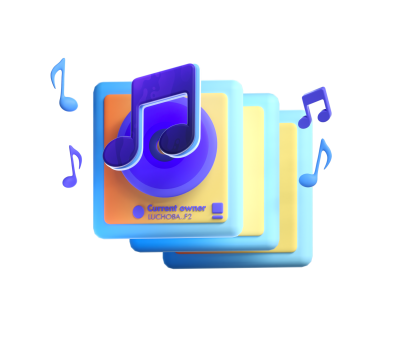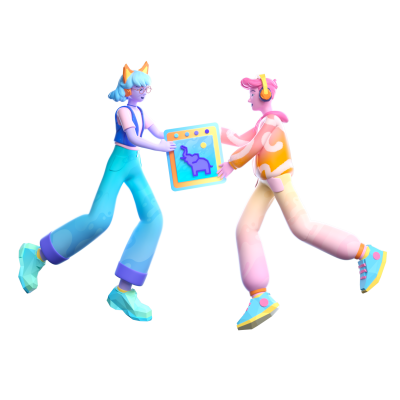NFTs and Creators

In the advent of digital ownership lesson, we explained how public blockchains like Ethereum made it possible to assign ownership to digital files, and prevent them from being spent twice.
While the internet was able to make digital files infinitely copyable, this isn’t ideal if you are an artist who only wanted to make 10 original edition copies, or a musician who wanted to issue a limited edition album.
Ethereum made digital scarcity possible because data added to a public blockchain means that everyone can see who owns what, and verify their ownership as they change hands.

While the digital is still infinitely copyable, the ownership of the digital file is not. How is that possible?
If you can bear the economic jargon for a moment, the concept that led us here is important to explain briefly. Ethereum is fungible — you can trade 1 ETH for another ETH, and you have exactly the same thing.
Non-fungible means that it is a one-of-a-kind. In web3, non-fungible tokens, or NFTs are provably scarce digital items, whether that be digital trading cards, tickets to an event, in-game items, digital music, or art.
NFTs don’t make it impossible to copy the digital files (yes, go ahead and “right click, save as” all you want), but it does make it possible to link digital ownership to the digital file to prove that it is the “real” one, all of which is stored and visible on Ethereum or another public blockchain.
So think of NFTs like a certificate of authenticity: while the original work can be copied infinitely, the certificate lets you know which is the original.
NFTs brought Ethereum to the mainstream in 2021, not least for the celebrities and artists that drew headlines for record breaking sales, Beeple who sold his “5,000 days” work for $69.3 million in 2021, positioned him between Koons and Hockney as “the top three most valuable living artists” according to Christie’s, which held the auction. Millions of people use MetaMask to buy and sell NFTs on marketplaces, or directly from artists.

But NFTs mean more than speculative investments. They represent new ways for creators to monetize their art and even connect with their fans. A lot of ink has been spilled explaining how social media and music streaming platforms changed the relationship between creators and fans by introducing a new intermediary: the platform.
For example, if you released music on Spotify in 2021 and received an average number of plays, you would have made only about $636. YouTube on the other hand paid out about $2.47 per channel, and Meta, a paltry $0.10 per creator.
On the other hand, web3 paid out about $174,000 per creator in 2021. While each of the 22,400 web3 artist’s didn’t rake in these types of figures, it does show that NFTs became a significant industry for the creator class, with over $9 billion in primary sales and royalties on secondary sales. For many creators operating in these new digital spaces, NFTs represented the first bonafide way to support their craft full-time.
The increasingly vague “creator economy” is a term used to describe internet spaces meant to help creators monetize in new ways. OnlyFans, Twitch, and other platforms promise platform users freedom to earn directly from their fans instead of relying on an ad-driven, attention-based monetization model like a social network. However, unlike web3 networks, creators can be booted from the network capriciously, and don’t own the content that they share.
With NFTs as a part of the patron-artist relationship, artists also have a direct line with their earliest supporters — a collection of Ethereum addresses or ENS names that can be used for mailing lists, entry passes, and payment systems for artists to engage their fans no matter the platform they are using.

Unlike the social networks of Web2, NFTs can be bought on one service, sold on a secondary market, or used for other games and applications.
In other words, by inheriting the properties of Ethereum, NFTs are portable and interoperable representations of, well, anything!
NFTs and Creators
 01
01Non-fungible means that it is a one-of-a-kind
 02
02In Web3, non-fungible tokens, or NFTs are provably scarce digital items, whether that be digital trading cards, tickets to an event, in-game items, digital music, or art
 03
03With NFTs as a part of the patron-artist relationship, artists also have a direct line with their earliest supporters, no matter the platform they are using
Ready to take the next step?
Explore MetaMask